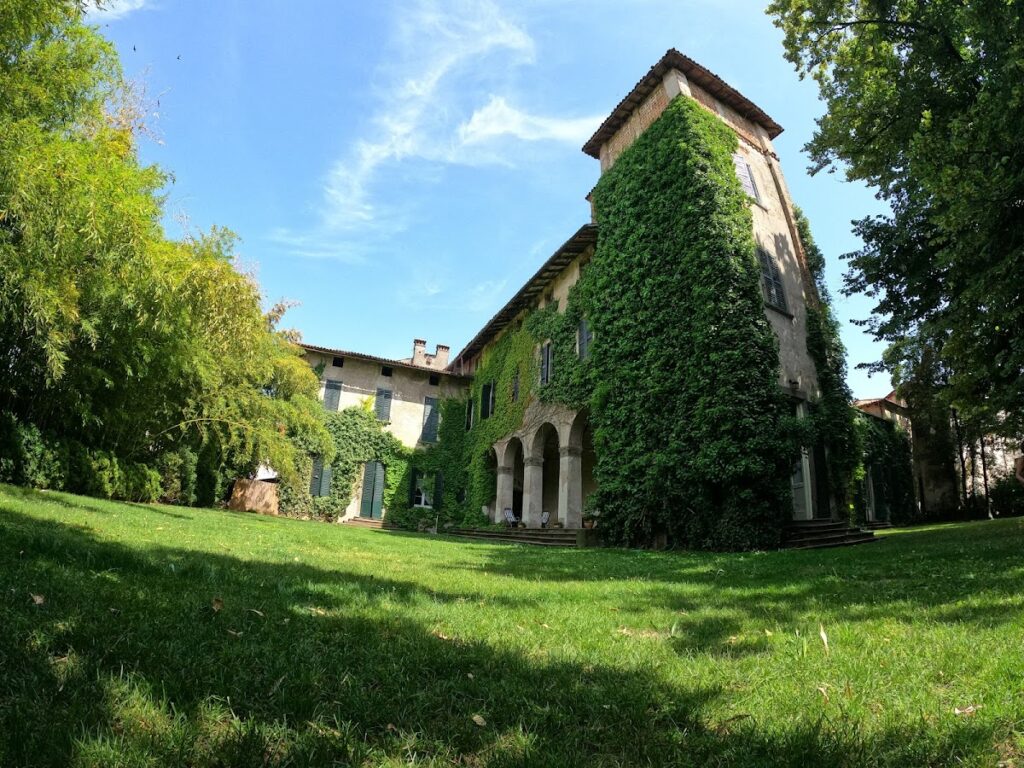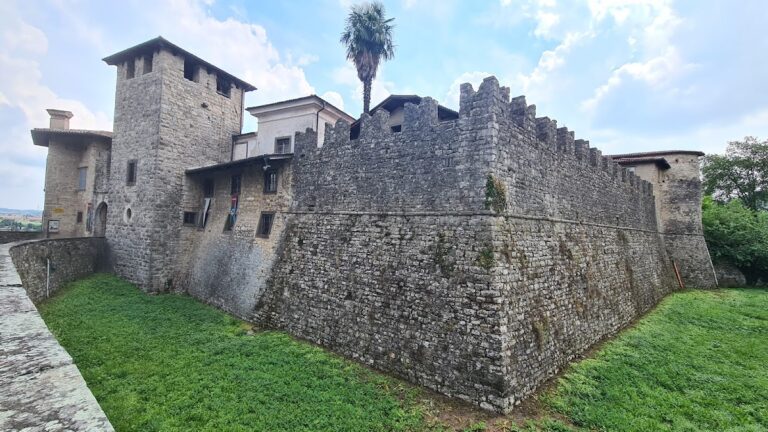Castello Secco Suardo: A Medieval Fortress in Lurano, Italy
Visitor Information
Google Rating: 4.3
Popularity: Very Low
Google Maps: View on Google Maps
Official Website: www.castellodilurano.it
Country: Italy
Civilization: Unclassified
Remains: Military
History
Castello Secco Suardo, situated in the municipality of Lurano in modern-day Italy, originated during the 13th century as a fortified structure created by medieval builders to guard the local territory. The area around Lurano had been inhabited since Roman times, partly due to its abundant water sources near the Bergamasco ditch, which made the location strategically valuable from early on.
The first documentary mention of the castle dates to 1216. Throughout the Middle Ages, the fortress was contested by various noble families seeking control over the surrounding lands. Its military significance increased notably after 1428 when the Republic of Venice extended its authority into the region. Venice used the castle as a defensive stronghold against incursions from the Visconti family, rulers of Milan. One recorded episode of conflict occurred in 1407, when the castle was deliberately set on fire by Jacopo Dal Verme, a commander acting for Venice, during hostilities involving Pandolfo Malatesta, the ruler of Bergamo at that time.
Ownership of the castle eventually passed into the hands of the Secco counts of Caravaggio. In 1483, Socino II Secco undertook major renovations, guided by architect Venturino Moroni, reflecting the family’s ambition to enhance the castle’s fortifications and domestic comfort. By 1517, the property came into the possession of Ludovico Suardo, uniting the two families’ names—Secco and Suardo—and establishing the castle as the family seat.
The 17th century brought periods of unrest linked to Francesco Bernardino Visconti, who was known as a bandit leader with interests in the castle, suggesting the site’s continuing strategic and symbolic importance. In the following century, the grounds of the castle gained a new cultural dimension when Gerolamo Secco Suardo created Bergamo’s first botanical garden there, introducing a distinguished interest in natural sciences and horticulture.
Into the 19th century, the castle remained with the Secco Suardo family, with Giovanni Secco Suardo noted for his passion in art collection and efforts to restore the building’s features. Since 1991, the site has served as the home of the Giovanni Secco Suardo Association, an organization dedicated to the preservation and restoration of cultural heritage related to the castle and its history.
Remains
The castle complex of Castello Secco Suardo presents an ensemble of connected buildings arranged around a rectangular inner courtyard. Construction spans from the original 13th-century core through to modifications completed in the 20th century, illustrating continuous occupation and adaptation. Surrounding the structure, the external garden preserves elements of an 18th-century botanical collection, retaining rare plant species introduced during that period.
Among the oldest surviving components are a 15th-century tower and an adjoining portico supported by ribbed vaults, architectural features typical of the late medieval period. A private chapel dating from the 17th century remains within the complex; its interior houses a notable 1309 stone slab memorializing Alberigo Suardi. This slab was relocated from the now-demolished Santo Stefano church in Bergamo, establishing a direct connection with the region’s ecclesiastical heritage. The chapel also contains the burial sites of Baldino and Teobaldo and features a fresco depicting the Madonna alongside various saints.
The ground floor contains a trio of vaulted rooms that served as living quarters, known today as the Yellow Room, the Green Room, and a dining area. Adjacent to these is the Bacchantes Hall, which opens onto the garden and is decorated with floral patterns and human-like figures, reflecting artistic tastes from past centuries. The Secco Suardo family archives are housed in additional rooms within this area, preserving historical documents related to the site.
Access to the main noble floor is provided by a broad staircase leading to a gallery illuminated by large windows along one side. This floor includes several rooms, notably the “Chinese Room,” which features decorative art from the 18th and 19th centuries. A small alcove connected to this room displays paintings attributed to Bernardino Galliari, a prominent artist, and contains a compact theater space distinguished by a loggia with three central arches flanked by two side arches, all enclosed by railings.
Additional sections of the castle include ancient kitchen spaces equipped with a substantial stone fireplace and a mezzanine level accessible via a spiral staircase. A large hall with a fireplace opens onto a portico that leads directly into the garden area, providing a transition between interior and exterior spaces.
Beneath the castle, medieval underground passages and galleries survive, featuring narrow defensive openings known as loopholes and roof structures with barrel vaults—rounded, arch-like ceilings typical of medieval construction. These subterranean elements hint at the fortress’s defensive role throughout its history and remain as part of the architectural fabric visible today.










